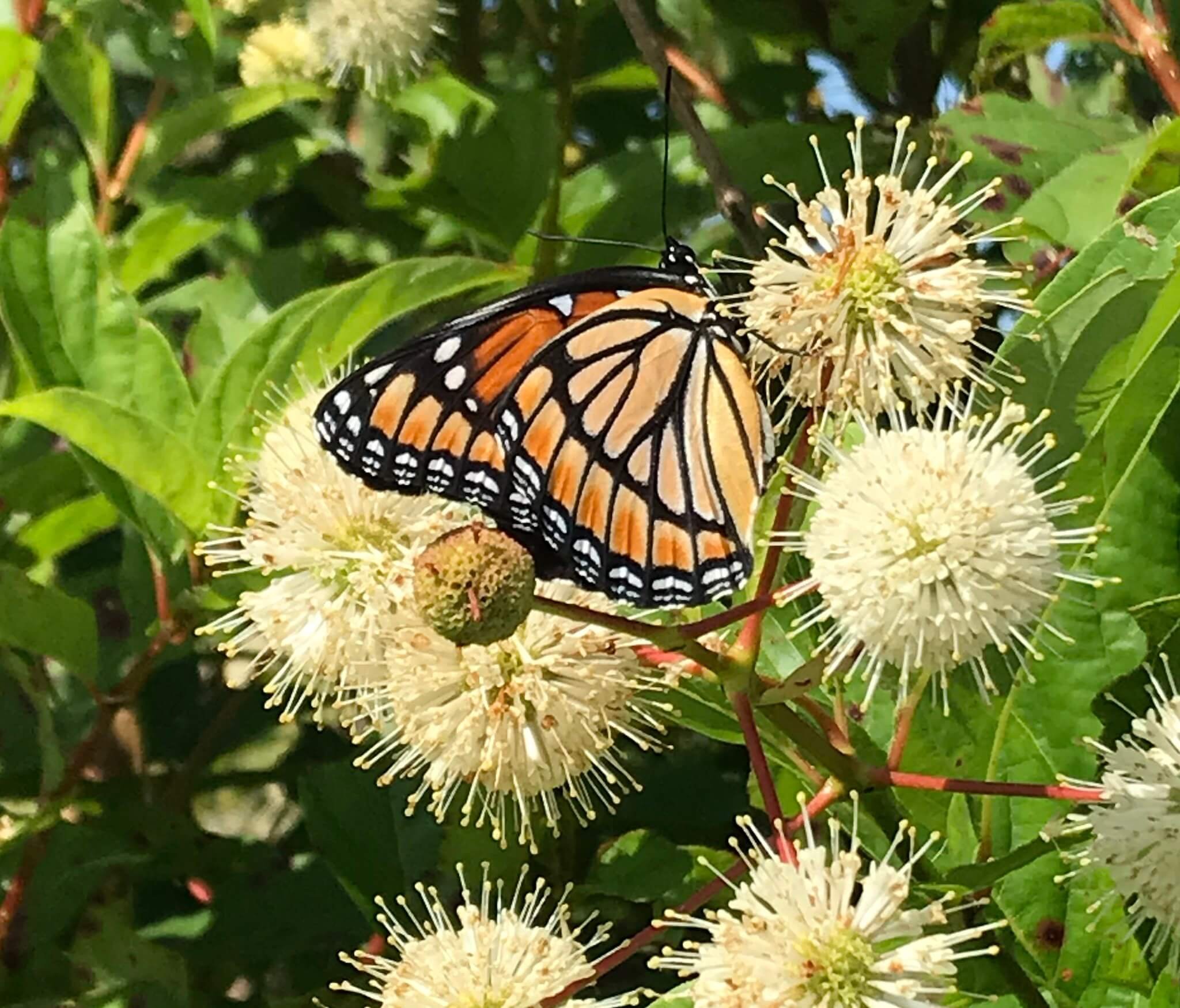Purple Coneflower (Echinacea purpurea)
Purple Coneflower really is a classic! It can handle drought and deer and is still a very attractive plant. Another benefit, get up close and you will be able to smell a lovely fragrance. Purple coneflower is well-known for being a pollinator magnet. It attracts many different species of butterflies looking for nectar. Purple Coneflower is recommended as a monarch nectar source by the Xerces Society (Xerces.org) and it is recommended as a preferred pollinator plant by the Xerces Society (Xerces.org). It is also a host plant to 6 different specialist bees (Johnson and Colla, 2023).
Photo credit: Cyprus Gabriel-Menegay
Purple Coneflower really is a classic! It can handle drought and deer and is still a very attractive plant. Another benefit, get up close and you will be able to smell a lovely fragrance. Purple coneflower is well-known for being a pollinator magnet. It attracts many different species of butterflies looking for nectar. Purple Coneflower is recommended as a monarch nectar source by the Xerces Society (Xerces.org) and it is recommended as a preferred pollinator plant by the Xerces Society (Xerces.org). It is also a host plant to 6 different specialist bees (Johnson and Colla, 2023).
Photo credit: Cyprus Gabriel-Menegay
Purple Coneflower really is a classic! It can handle drought and deer and is still a very attractive plant. Another benefit, get up close and you will be able to smell a lovely fragrance. Purple coneflower is well-known for being a pollinator magnet. It attracts many different species of butterflies looking for nectar. Purple Coneflower is recommended as a monarch nectar source by the Xerces Society (Xerces.org) and it is recommended as a preferred pollinator plant by the Xerces Society (Xerces.org). It is also a host plant to 6 different specialist bees (Johnson and Colla, 2023).
Photo credit: Cyprus Gabriel-Menegay
Life Cycle: Perennial
Sun Exposure: Full, Partial
Soil Moisture: Medium-wet, medium, to Dry
Height: 3-4 feet
Plant Spacing: 18-24”
Bloom Time: July-September
Bloom Color: Purple
Advantages: Pollinator Favorite, Bird Favorite, Deer Resistant, Great landscaping plant
Host Plant: 1 species of butterflies and moths use this as a caterpillar host plant in our area (nwf.org)
Specialist Bee: Andrena helianthiformis, Pseudopanurgus albitarsis, Melissodes coreopsis, Melissodes wheeleri, Megachile parallela, and Ashmeadiella bucconis (Johnson and Colla, 2023)
Complementary Plants: Mountain Mint, Little Bluestem, Beardtongues, Bee Balm, Butterfly Weed, Ohio Spiderwort
Resource: Johnson, Lorraine, and Sheila Colla. A Northern Gardener’s Guide to Native Plants and Pollinators: Creating Habitat in the Northeast, Great Lakes, and Upper Midwest. Island Press, 2023








